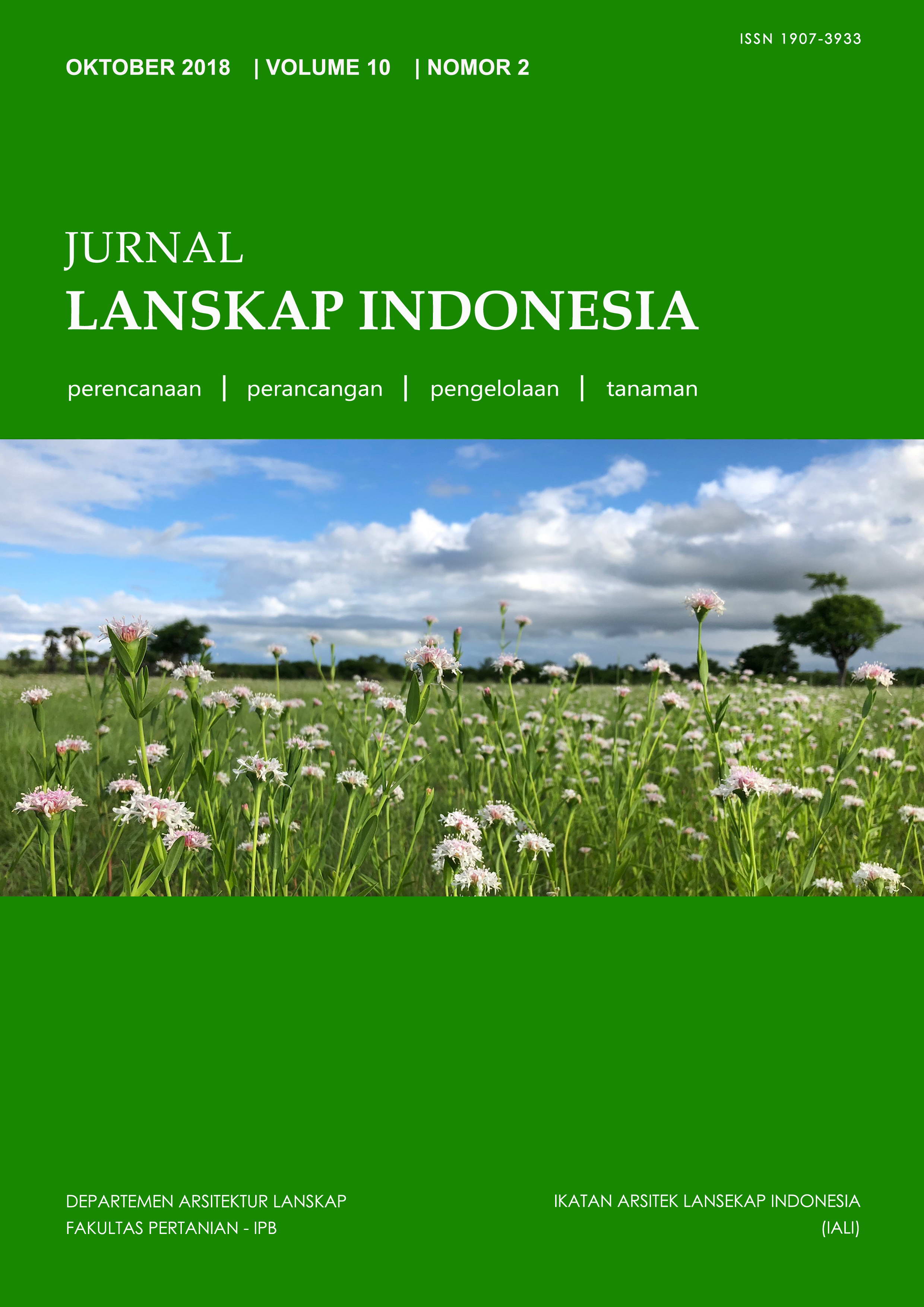KAJIAN LANSKAP BUDAYA MELAYU UNTUK MENINGKATKAN IDENTITAS KOTA MEDAN
Abstract
Medan city which is now inhabited by multi-ethnic society provide cultural influence on indigenous people and led to demands that greater space requirements and varied, original identity that reflects the value of a city is difficult to identify. These conditions pose a threat to the city of Medan to be getting away from the Malay identity as a civilized nation. This study aims to identify the philosophy and character of the Malay cultural landscape in the city of Medan, analyze relevant landscape value and provide conservation strategies in the cultural landscape in the city of Medan. The research location is the Medan city field to historical research methods and Analytical Hierarchy Process (AHP). The analysis shows the highest value is in the component historic area (0.238). Furthermore Landmark (0.159), the Culture activity (0.115), Public Space (0.083), Lane Circulation (0.074), RTH (0.075), landuse (0,066), Time series (0.066), Borders (0.067), Architecture (0.057) . Preservation strategy is the establishment of district Maimun Palace, Taman Sri deli and Al Mahsun become a cultural heritage area inseparable.
Downloads
This journal permits and encourages authors to post items submitted to the journal on personal websites or institutional repositories both prior to and after publication, while providing bibliographic details that credit, if applicable, its publication in this journal. However, after the article is submitted and published in this journal, it is fully copyrighted by the Jurnal Lanskap Indonesia or JLI. If excerpts from other copyrighted works are included, the author must obtain written permission from the copyright owner and give credit to the source in the article. Then, the writer or reader is allowed to copy, share, and redistribute articles/material in any form. But it must still include the appropriate source and credit because the article in this journal is licensed by Creative Commons Attribution 4.0 International License (CC BY 4.0).
I. Proposed Policy for Journals That Offer Open Access
Authors who publish with this journal agree to the following terms:
- Authors retain copyright and grant the journal right of first publication with the work simultaneously licensed under a Creative Commons Attribution License that allows others to share the work with an acknowledgement of the work's authorship and initial publication in this journal.
- Authors are able to enter into separate, additional contractual arrangements for the non-exclusive distribution of the journal's published version of the work (e.g., post it to an institutional repository or publish it in a book), with an acknowledgement of its initial publication in this journal.
- Authors are permitted and encouraged to post their work online (e.g., in institutional repositories or on their website) prior to and during the submission process, as it can lead to productive exchanges, as well as earlier and greater citation of published work (See The Effect of Open Access).
II. Proposed Policy for Journals That Offer Delayed Open Access
Authors who publish with this journal agree to the following terms:
- Authors retain copyright and grant the journal right of first publication, with the work after publication simultaneously licensed under a Creative Commons Attribution License that allows others to share the work with an acknowledgement of the work's authorship and initial publication in this journal.
- Authors are able to enter into separate, additional contractual arrangements for the non-exclusive distribution of the journal's published version of the work (e.g., post it to an institutional repository or publish it in a book), with an acknowledgement of its initial publication in this journal.
- Authors are permitted and encouraged to post their work online (e.g., in institutional repositories or on their website) prior to and during the submission process, as it can lead to productive exchanges, as well as earlier and greater citation of published work (See The Effect of Open Access).



























